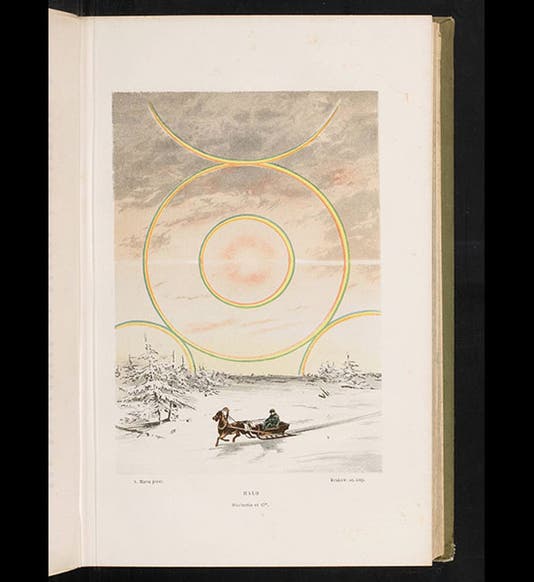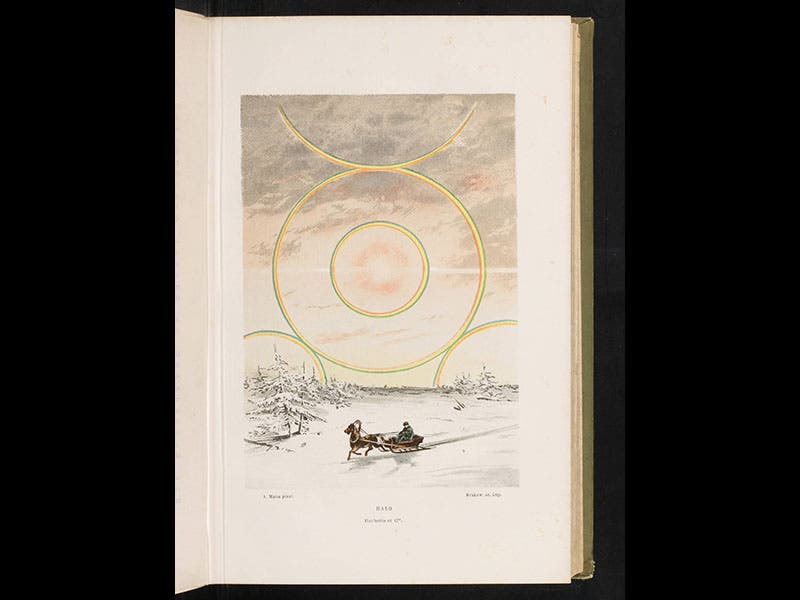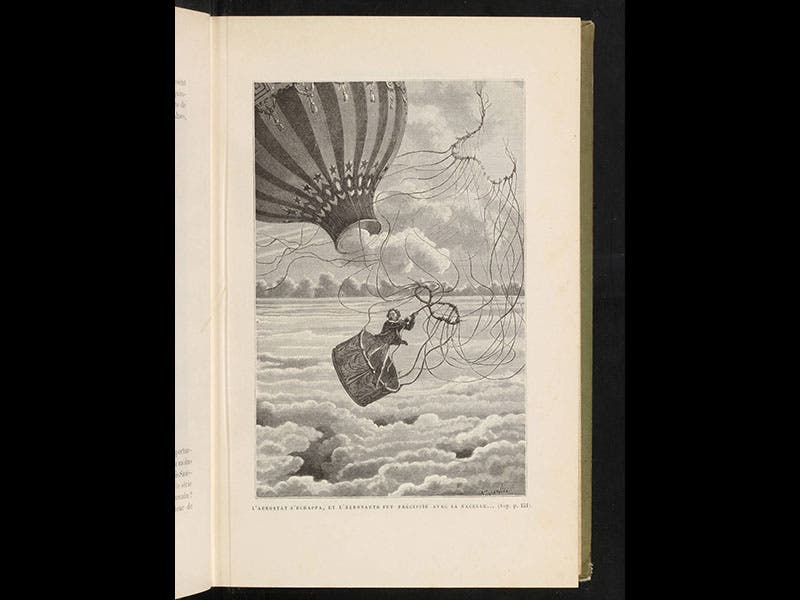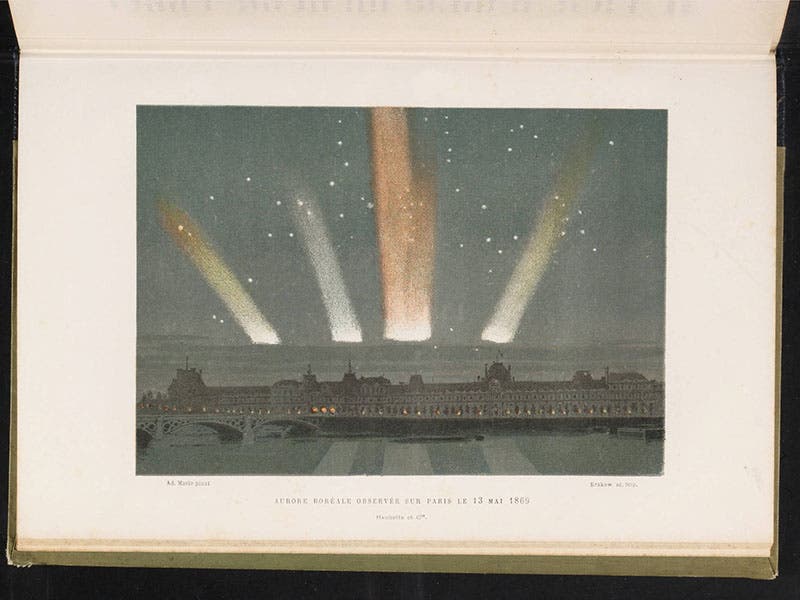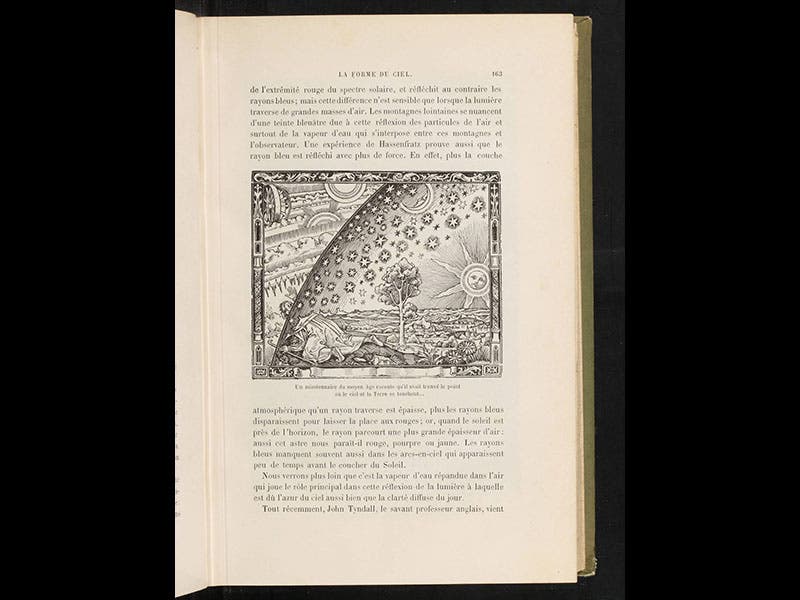Scientist of the Day - Camille Flammarion
Camille Flammarion, a French astronomer, was born Feb. 26, 1842. Flammarion published his first book in 1862, La pluralité des mondes habités (The Plurality of Inhabited Worlds), at the ripe age of 20, and he went on to become the mostly widely-read author of popular science books in the last half of the nineteenth century. Flammarion understood the importance of vivid and plentiful illustrations, and his books are filled with attractive wood engravings and chromolithographs that are still often reproduced. We feature today a book by Flammarion titled L’atmosphere (1888) and parade before you a variety of illustrations from this book, depicting an arctic halo; a day in spring (with the wonderful caption “L’atmosphere, c’est la vie”); an accident in a high-altitude balloon, and an aurora borealis (see first four images above)
However, one of the illustrations from L’atmosphere is more famous than all the others and has taken on a life of its own; it depicts, in a Renaissance style, a medieval philosopher, poking his head through the sphere of stars to view the wheels and cogs that drive the heavens (fifth image above). It is such a delightful scene that many scholars who should know better have assumed it actually is a late-medieval woodcut, and the illustration appears regularly in all manner of modern publications, most infamously on the dust jacket of Daniel Boorstin’s best-selling history of science survey, The Discoverers (1983) (see sixth image above), where it is attributed to a 16th century woodcut. Wikipedia has an entire article on what it calls"The Flammarion Woodcut," if you would like to see further examples of what happens when researchers don’t do their homework.
Dr. William B. Ashworth, Jr., Consultant for the History of Science, Linda Hall Library and Associate Professor, Department of History, University of Missouri-Kansas City

